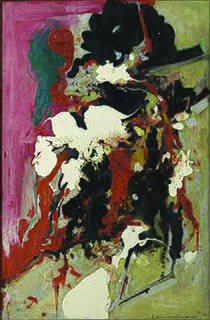Top 65 Quotes & Sayings by Hans Hofmann
Explore popular quotes and sayings by a German artist Hans Hofmann.
Last updated on April 14, 2025.
Art leads to a more profound concept of life, because art itself is a profound expression of feeling. The artist is born, and art is the expression of his overflowing soul. Because his soul is rich, he cares comparatively little about the superficial necessities of the material world; he sublimates the pressure of material affairs in an artistic experience.
Just as counterpoint and harmony follow their own laws, and differ in rhythm and movement, both formal tensions and color tensions have a development of their own in accordance with the inherent laws from which they are separately derived. Both, however, aim toward the realization of the same image. And both deal with the depth problem.
The truly monumental can only come about by means of the most exact and refined relation between parts. Since each thing carries both a meaning of its own and an associated meaning in relation to something else - its essential value is relative. We speak of the mood we experience when looking at a landscape. This mood results from the relation of certain things rather than from their separate actualities. This is because objects do not in themselves possess the total effect they give when interrelated.
The general misunderstanding of a work of art is often due to the fact that the key to its spiritual content and technical means is missed. Unless the observer is trained to a certain degree in the artistic idiom, he is apt to search for things which have little to do with the aesthetic content of a picture. He is likely to look for pure representational values when the emphasis is really upon music-like relationships.
The impressionistic method leads into a complete splitting and dissolution of all areas involved in the composition, and color is used to create an overall effect of light. The color is, through such a shading down from the highest light in the deepest shadows, sacrified an degraded to a (black-and-white) function. This leads to the destructions of the color as color.
























